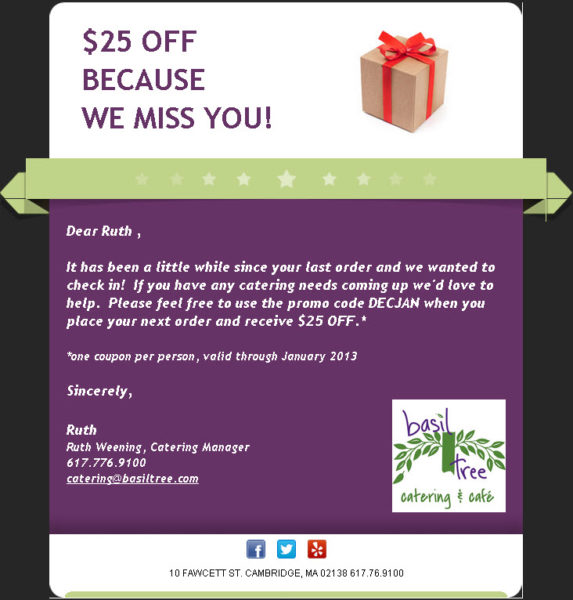Help, My Contacts Aren’t Opening My Emails!

At Constant Contact, we usually say that the average email open rate is about 20%.
That range fluctuates anywhere from 15 to 50%, depending on your industry.
It can be frustrating to spend so much energy on a campaign that only a fifth of your contacts open. So, every now and again, it can be beneficial to run a reengagement campaign that specifically targets the people who aren’t opening your emails.
This can boost your overall open rate and help you clean your contact list.
Here’s what you need to do:
1. Find out who’s not opening your emails
Let’s say you fit squarely in the 20% range when it comes to open rates. More than likely, you have an engaged, core audience, a few people who occasionally open the email, and then contacts who aren’t opening, but haven’t unsubscribed.Check your email reports in your Constant Contact account then follow these steps to create a list of contacts who haven’t opened your email.
If you have online orders, you can check the results of who redeemed an offer or placed an order against the email addresses in your contact list or customer relationship management system and create a list from that.
That’s how Catering Manager Ruth Weening of Basil Tree Catering segmented the company’s customers.
“We decided we needed to be more proactive in contacting inactive customers and categorized people who hadn’t ordered from us in over three months as ‘inactive,” she explains.
In early January, Ruth ran a reengagement campaign for all of these contacts.
She also sent the campaign to herself:

2. Launch your email contact reengagement campaign
You’ll notice the “Because We Miss You…” subject line to Basil Tree Catering’s reengagement campaign, which shows email subscribers that it’s exclusive.It’s a good idea to differentiate this campaign with a more personal subject line. Showing that you know a contact isn’t often engaged with your emails will let them know that the email was made with them in mind.
Inside Basil Tree Catering’s campaign, people found a coupon offering $25 off their next order:

3. Track your email recipient engagement
This should be the final round for these contacts, so watch your open rate closely.Ruth’s campaign received a 35% open rate. Two of the emails bounced and one contact opted out.
That’s all helpful information, because it helps narrow down whether or not contacts still want to receive your email. As we mentioned on this blog before, if your email bounces, you should do something about it.
The next step for Ruth is to track how many people redeem the coupon and segment accordingly.
“We just started using Constant Contact for reengagement campaigns in early January, so I don’t have tons of data so far,” she explains. “But the results seem positive. About 20% of the people who opened the email ended up redeeming the coupon. I’ve definitely heard from the staff that more people seem to be redeeming coupons and that they seem to be redeeming them more quickly after I send the email.”
Engaging your email list and checking it twice
Reengagement campaigns are great ways to connect with customers and remind them why they love your business. This can also help clean your list by allowing you find and remove inactive contacts.Ruth’s reengagement campaign had the added bonus of getting some extra business from people who otherwise would have stayed unengaged.
The best part about running a reengagement campaign is that they often have a lasting effect, because the contacts who received your campaign will pay more attention to your future emails.
So, think hard about what kinds of promotions, offers, or personal emails you can send to your inactive contacts and start reengaging today!
Comments
Post a Comment